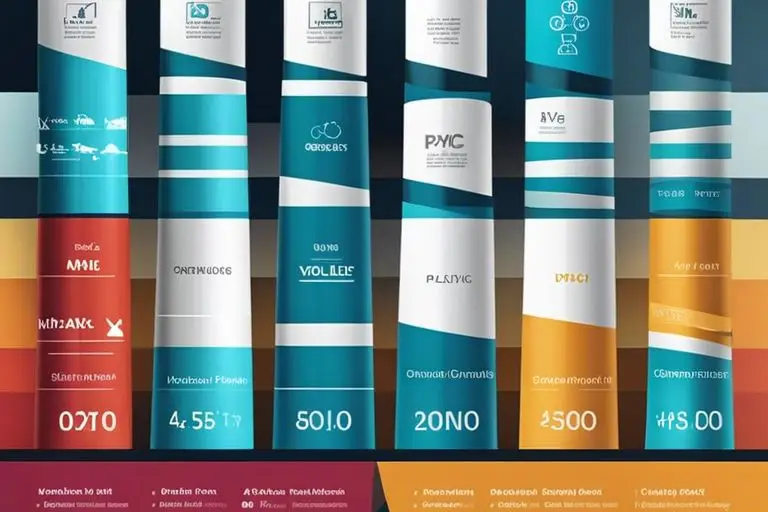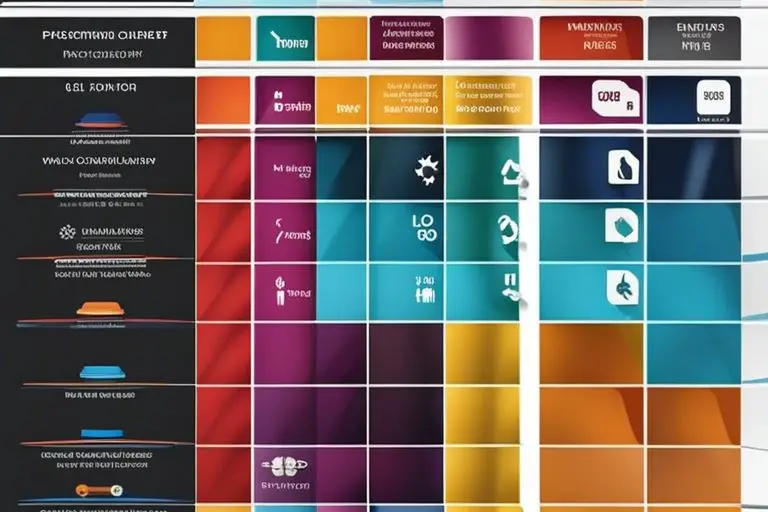Commonly used plastics have become an integral part of our daily lives, from the packaging of goods to the construction of household items. Among the plethora of plastic varieties available, one reigns supreme as the most commonly used material worldwide. Understanding which type of plastic holds this title can shed light on the environmental impact, recycling challenges, and health concerns associated with its widespread use. Let's probe into the world of plastics to uncover the most prevalent player in this global industry.
Key Takeaways:
- PET or Polyethylene Terephthalate: PET is the most commonly used type of plastic and is widely used in packaging for beverages, food, and personal care products.
- HDPE or High-Density Polyethylene: HDPE is another common type of plastic that is used in various products such as milk jugs, shampoo bottles, and plastic bags.
- Single-Use Plastics: Many of the commonly used plastics, such as PET and HDPE, are single-use plastics that have a significant environmental impact due to their high production and disposal rates.
The Prevalence of Plastics in Modern Society
Historical Development of Plastic Production
With rapid industrialization in the 19th century, the demand for new materials grew exponentially. In 1907, Leo Baekeland revolutionized the plastics industry by inventing Bakelite, the first fully synthetic plastic. This marked the beginning of mass production of plastics, shaping the modern world we live in today.
Application Areas of Different Plastics
Prevalence of plastics can be seen in various industries such as packaging, construction, healthcare, automotive, and electronics. Each type of plastic is uniquely suited for specific applications based on its properties like durability, flexibility, transparency, and chemical resistance.
Areas where plastics excel include their versatility in packaging food and beverages, lightweight construction materials for vehicles, life-saving medical equipment, and durable electronic components. However, it is crucial to note that improper disposal of plastics leads to environmental pollution and poses a significant threat to wildlife and ecosystems. Despite these challenges, the innovative use of plastics continues to drive advancements in various industries.
Types of Commonly Used Plastics
Some plastics are more prevalent in our daily lives than others, each serving different purposes based on their unique properties. Understanding the most commonly used plastics can help us make informed decisions about their consumption and disposal.
- Polyethylene (PE)
- Polypropylene (PP)
- Polyvinyl Chloride (PVC)
- Polyethylene Terephthalate (PET or PETE)
- Polystyrene (PS)
Assume that for more detailed information on the 5 most common plastics and their everyday uses, you can refer to The 5 Most Common Plastics & Their Everyday Uses.
Polyethylene (PE)
To LowDensity Polyethylene is widely used in packaging due to its flexibility and resistance to moisture. It is commonly found in plastic bags, bottles, and films.
Polypropylene (PP)
The Understanding versatility of Polypropylene makes it a popular choice for various applications such as food containers, textiles, and automotive parts. Its high melting point and resistance to chemicals make it ideal for durable products.
Polyvinyl Chloride (PVC)
Used A widely in construction and healthcare industries, Polyvinyl Chloride is known for its durability and versatility. Its rigid form is commonly used in pipes, window frames, and medical devices.
Polyethylene Terephthalate (PET or PETE)
LowDensity Chloride Polyethylene Terephthalate is commonly used in beverage bottles due to its lightweight and shatter-resistant properties. It is also easily recyclable, making it a popular choice for single-use packaging.
Polystyrene (PS)
Polyethylene HighDensity Polystyrene is known for its insulation properties and is commonly used in food packaging, electronics, and disposable cutlery. However, it is important to note that polystyrene is non-biodegradable and can have negative environmental impacts if not properly disposed of or recycled.

Factors Determining Plastic Usage
All factors that determine the usage of plastic in various industries are important to consider. Here are some key factors to keep in mind:
- Physical properties: The physical properties of a particular type of plastic, such as its strength, flexibility, and durability, play a crucial role in determining its suitability for specific applications. Different plastics offer a wide range of physical properties that make them suitable for various uses. Assume that each industry carefully considers these properties before selecting a type of plastic for their products. What Are the Most Common Kinds of Plastics?
Physical Properties
Plastic's physical properties, including strength, flexibility, and durability, influence its applicability across various industries. Manufacturers choose specific plastics based on the desired characteristics for their products.
Economic Considerations
Determining the economic feasibility of using a particular plastic is crucial for businesses. Factors like material cost, production efficiency, and market demand play a significant role in selecting the most cost-effective option. Usage of plastic in the manufacturing process must be economically sustainable to ensure profitability.
Environmental Impact and Recyclability
Plastic's environmental impact and recyclability are increasingly important considerations in today's society. Businesses and consumers are placing more emphasis on using plastics that are environmentally friendly and can be recycled efficiently. Selecting plastic materials with low environmental impact and high recyclability rates is becoming a top priority for many industries.
Environmental Impact and Recyclability
Economic considerations are inevitably linked to the environmental impact and recyclability of plastics. Companies that prioritize environmentally friendly practices and recycling initiatives can benefit from reduced waste disposal costs and a positive brand image. Choosing plastics with better recyclability and lower environmental impact can lead to long-term cost savings and environmental benefits.

Advancements in Plastic Materials
Bioplastics and Plant-Based Alternatives
To address environmental concerns surrounding traditional plastics, researchers and manufacturers have been exploring bioplastics and plant-based alternatives. Bioplastics are derived from renewable resources such as corn starch, sugarcane, or even algae, making them more sustainable than conventional plastics. These materials can be biodegradable or compostable, reducing their impact on the environment. While bioplastics show promise in reducing plastic pollution, there are still challenges in terms of scalability and cost that need to be addressed.
Innovations in Plastic Recycling
Plastic recycling has seen significant advancements in recent years, with technologies that can recycle a wider range of plastics, including mixed plastics. Chemical recycling processes are being developed to break down plastics into their original components for reuse, reducing the need for virgin plastic production. However, challenges remain in infrastructure, collection, and consumer education to maximize the potential of these innovations in plastic recycling.
Innovations: The development of advanced sorting and recycling technologies has the potential to revolutionize the plastic recycling industry by improving efficiency and reducing contamination in recycled materials. Additionally, the focus on creating a circular economy for plastics emphasizes the importance of recycling and reusing plastic materials to minimize environmental impact.
Summing up
On the whole, it is clear that polyethylene, specifically in the form of LDPE and HDPE, is the most commonly used type of plastic worldwide. Its versatility, durability, and cost-effectiveness make it a popular choice for a wide range of products and packaging. While other types of plastics such as polypropylene and PVC also have significant usage, polyethylene remains the leader due to its widespread availability and applicability in various industries. Understanding the dominance of polyethylene in the plastic market can give insight into the challenges and opportunities for improving sustainability and reducing plastic pollution in the future.
FAQ
Q: Which type of plastic is the most commonly used?
A: The most commonly used type of plastic is known as polyethylene terephthalate (PET). It is widely used in beverage bottles, food packaging, and polyester clothing.
Q: What are the characteristics of polyethylene terephthalate (PET)?
A: PET is a lightweight, durable, and transparent plastic that is resistant to impact and moisture. It is also easily recyclable, making it a popular choice for various applications.
Q: How is polyethylene terephthalate (PET) recycled?
A: PET can be recycled by collecting discarded plastic products, cleaning and shredding them, melting the shredded material to form pellets, and then using these pellets to create new products such as bottles, containers, and fabrics.
